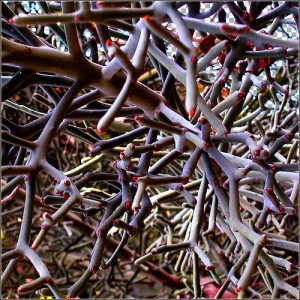“Where printed genres are linear or hierarchical, hypertext is multiple and associative. Where a printed text is static, a hypertext responds to the reader’s touch . . . Whether multilinearity and interactivity really do render hypertext better than print, is a cultural determination . . . Each group will claim that their writing space is more natural or truer to experience, which is a version of the claims of immediacy . . . ” (Bolter [*])
Proponents of hypertext claim that it is more natural than linear, sequential writing. Claims of being more “natural” reveal biases; some view orality as more natural, and writing as artificial.
Does hypertext, with its multiple nodes and branching associations, more accurately mimic the human brain?
Does a scientific model of the brain reflect the technologies available for imagining it, or culture’s view of what it means to be human?
